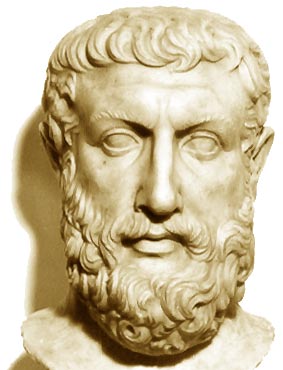|
Pratītyasamutpāda
''Pratītyasamutpāda'' (Sanskrit: प्रतीत्यसमुत्पाद, Pāli: ''paṭiccasamuppāda''), commonly translated as dependent origination, or dependent arising, is a key doctrine in Buddhism shared by all schools of Buddhism. It states that all dharmas (phenomena) arise in dependence upon other dharmas: "if this exists, that exists; if this ceases to exist, that also ceases to exist". The basic principle is that all things (dharmas, phenomena, principles) arise in dependence upon other things. The doctrine includes depictions of the arising of suffering (''anuloma-paṭiccasamuppāda'', "with the grain", forward conditionality) and depictions of how the chain can be reversed (''paṭiloma-paṭiccasamuppāda'', "against the grain", reverse conditionality).Fuller, Paul (2004). ''The Notion of Ditthi in Theravada Buddhism: The Point of View.'' p. 65. Routledge.Harvey, Peter. ''The Conditioned Co-arising of Mental and Bodily Processes within Life and Bet ... [...More Info...] [...Related Items...] OR: [Wikipedia] [Google] [Baidu] |
Buddhism
Buddhism ( , ), also known as Buddha Dharma and Dharmavinaya (), is an Indian religion or philosophical tradition based on teachings attributed to the Buddha. It originated in northern India as a -movement in the 5th century BCE, and gradually spread throughout much of Asia via the Silk Road. It is the world's fourth-largest religion, with over 520 million followers (Buddhists) who comprise seven percent of the global population. The Buddha taught the Middle Way, a path of spiritual development that avoids both extreme asceticism and hedonism. It aims at liberation from clinging and craving to things which are impermanent (), incapable of satisfying ('), and without a lasting essence (), ending the cycle of death and rebirth (). A summary of this path is expressed in the Noble Eightfold Path, a training of the mind with observance of Buddhist ethics and meditation. Other widely observed practices include: monasticism; "taking refuge" in the Buddha, the , and the ... [...More Info...] [...Related Items...] OR: [Wikipedia] [Google] [Baidu] |
Nagarjuna
Nāgārjuna . 150 – c. 250 CE (disputed)was an Indian Mahāyāna Buddhist thinker, scholar-saint and philosopher. He is widely considered one of the most important Buddhist philosophers.Garfield, Jay L. (1995), ''The Fundamental Wisdom of the Middle Way'', Oxford: Oxford University Press. Jan Westerhoff considers him to be "one of the greatest thinkers in the history of Asian philosophy." Nāgārjuna is widely considered to be the founder of the Madhyamaka (centrism, middle-way) school of Buddhist philosophy and a defender of the Mahāyāna movement. His '' Mūlamadhyamakakārikā'' (Root Verses on Madhyamaka, or MMK) is the most important text on the madhyamaka philosophy of emptiness. The MMK inspired a large number of commentaries in Sanskrit, Chinese, Tibetan, Korean and Japanese and continues to be studied today. History Background India in the first and second centuries CE was politically divided into various states, including the Kushan Empire and the S ... [...More Info...] [...Related Items...] OR: [Wikipedia] [Google] [Baidu] |
Brick Inscribed With The Sutra On Dependent Origination EAX
A brick is a type of block used to build walls, pavements and other elements in masonry construction. Properly, the term ''brick'' denotes a block composed of dried clay, but is now also used informally to denote other chemically cured construction blocks. Bricks can be joined using mortar, adhesives or by interlocking them. Bricks are usually produced at brickworks in numerous classes, types, materials, and sizes which vary with region and time period, and are produced in bulk quantities. ''Block'' is a similar term referring to a rectangular building unit composed of similar materials, but is usually larger than a brick. Lightweight bricks (also called lightweight blocks) are made from expanded clay aggregate. Fired bricks are one of the longest-lasting and strongest building materials, sometimes referred to as artificial stone, and have been used since circa 4000 BC. Air-dried bricks, also known as mud-bricks, have a history older than fired bricks, and have an additi ... [...More Info...] [...Related Items...] OR: [Wikipedia] [Google] [Baidu] |
Ontology
In metaphysics, ontology is the philosophical study of being, as well as related concepts such as existence, becoming, and reality. Ontology addresses questions like how entities are grouped into categories and which of these entities exist on the most fundamental level. Ontologists often try to determine what the categories or highest kinds are and how they form a system of categories that encompasses classification of all entities. Commonly proposed categories include substances, properties, relations, states of affairs and events. These categories are characterized by fundamental ontological concepts, including particularity and universality, abstractness and concreteness, or possibility and necessity. Of special interest is the concept of ontological dependence, which determines whether the entities of a category exist on the most fundamental level. Disagreements within ontology are often about whether entities belonging to a certain category exist and, if so, ho ... [...More Info...] [...Related Items...] OR: [Wikipedia] [Google] [Baidu] |
Pali Canon
The Pāli Canon is the standard collection of scriptures in the Theravada Buddhist tradition, as preserved in the Pāli language. It is the most complete extant early Buddhist canon. It derives mainly from the Tamrashatiya school. During the First Buddhist Council, three months after the parinibbana of Gautama Buddha in Rajgir, Ananda recited the Sutta Pitaka, and Upali recited the Vinaya Pitaka. The Arhats present accepted the recitations and henceforth the teachings were preserved orally by the Sangha. The Tipitaka that was transmitted to Sri Lanka during the reign of King Asoka were initially preserved orally and were later written down on palm leaves during the Fourth Buddhist Council in 29 BCE, approximately 454 years after the death of Gautama Buddha. The claim that the texts were "spoken by the Buddha", is meant in this non-literal sense. The existence of the bhanaka tradition existing until later periods, along with other sources, shows that oral tradit ... [...More Info...] [...Related Items...] OR: [Wikipedia] [Google] [Baidu] |
Atharvaveda
The Atharva Veda (, ' from ' and ''veda'', meaning "knowledge") is the "knowledge storehouse of ''atharvāṇas'', the procedures for everyday life".Laurie Patton (2004), Veda and Upanishad, in ''The Hindu World'' (Editors: Sushil Mittal and Gene Thursby), Routledge, , page 38 The text is the fourth Vedas, Veda, and is a late addition to the Vedic scriptures of Hinduism.Laurie Patton (1994), Authority, Anxiety, and Canon: ys in Vedic Interpretation, State University of New York Press, , page 57 The language of the Atharvaveda is different from Vedic Sanskrit, preserving pre-Vedic Indo-European archaisms. It is a collection of 730 Music of India#History, hymns with about 6,000 mantras, divided into 20 books.Maurice BloomfieldThe Atharvaveda Harvard University Press, pages 1-2 About a sixth of the Atharvaveda texts adapts verses from the Rigveda, and except for Books 15 and 16, the text is mainly in verse deploying a diversity of Vedic meters. Two different recensions of the text ... [...More Info...] [...Related Items...] OR: [Wikipedia] [Google] [Baidu] |
Rigveda
The ''Rigveda'' or ''Rig Veda'' ( ', from ' "praise" and ' "knowledge") is an ancient Indian collection of Vedic Sanskrit hymns (''sūktas''). It is one of the four sacred canonical Hindu texts ('' śruti'') known as the Vedas. Only one Shakha of the many survive today, namely the Śakalya Shakha. Much of the contents contained in the remaining Shakhas are now lost or are not available in the public forum. The ''Rigveda'' is the oldest known Vedic Sanskrit text. Its early layers are among the oldest extant texts in any Indo-European language. The sounds and texts of the ''Rigveda'' have been orally transmitted since the 2nd millennium BCE. Philological and linguistic evidence indicates that the bulk of the ''Rigveda'' Samhita was composed in the northwestern region of the Indian subcontinent (see) Rigvedic rivers), most likely between 1500 and 1000 BCE, although a wider approximation of 19001200 BCE has also been given. The text is layered, consistin ... [...More Info...] [...Related Items...] OR: [Wikipedia] [Google] [Baidu] |
Upanishads
The Upanishads (; sa, उपनिषद् ) are late Vedic Sanskrit texts that supplied the basis of later Hindu philosophy.Wendy Doniger (1990), ''Textual Sources for the Study of Hinduism'', 1st Edition, University of Chicago Press, , pages 2-3; Quote: "The Upanishads supply the basis of later Hindu philosophy; they are widely known and quoted by most well-educated Hindus, and their central ideas have also become a part of the spiritual arsenal of rank-and-file Hindus." They are the most recent part of the Vedas, the oldest scriptures of Hinduism, and deal with meditation, philosophy, consciousness, and ontological knowledge; earlier parts of the Vedas deal with mantras, benedictions, rituals, ceremonies, and sacrifices.Gavin Flood (1996), ''An Introduction to Hinduism'', Cambridge University Press, , pp. 35–39A Bhattacharya (2006), ''Hindu Dharma: Introduction to Scriptures and Theology'', , pp. 8–14; George M. Williams (2003), Handbook of Hindu Mythology, Oxford ... [...More Info...] [...Related Items...] OR: [Wikipedia] [Google] [Baidu] |
śūnyatā
''Śūnyatā'' ( sa, शून्यता, śūnyatā; pi, suññatā; ), translated most often as ''emptiness'', ''vacuity'', and sometimes ''voidness'', is an Indian philosophical concept. Within Hinduism, Jainism, Buddhism and other philosophical strands, the concept has multiple meanings depending on its doctrinal context. It is either an ontological feature of reality, a meditative state, or a phenomenological analysis of experience. In Theravāda Buddhism, ''Suññatā'' often refers to the non-self (Pāli: ''anattā'', Sanskrit: ''anātman'') nature of the five aggregates of experience and the six sense spheres. ''Suññatā'' is also often used to refer to a meditative state or experience. In Mahāyāna Buddhism, ''śūnyatā'' refers to the tenet that "all things are empty of intrinsic existence and nature ('' svabhava'')", but may also refer to the Buddha-nature teachings and primordial or empty awareness, as in Dzogchen, Shentong, or Chan. Etymology " ... [...More Info...] [...Related Items...] OR: [Wikipedia] [Google] [Baidu] |
Anicca
Impermanence, also known as the philosophical problem of change, is a philosophical concept addressed in a variety of religions and philosophies. In Eastern philosophy it is notable for its role in the Buddhist three marks of existence. It is also an element of Hinduism. In Western philosophy it is most famously known through its first appearance in Greek philosophy in the writings of Heraclitus and in his doctrine of ''panta rhei'' (everything flows). In Western philosophy the concept is also referred to as '' ''becoming''. Indian religions The Pali word for impermanence, ''anicca'', is a compound word consisting of ''"a"'' meaning non-, and ''"nicca"'' meaning "constant, continuous, permanent". While 'nicca' is the concept of continuity and permanence, 'anicca' refers to its exact opposite; the absence of permanence and continuity. The term is synonymous with the Sanskrit term ''anitya'' (a + nitya). The concept of impermanence is prominent in Buddhism, and it is also fou ... [...More Info...] [...Related Items...] OR: [Wikipedia] [Google] [Baidu] |
Nirvana
( , , ; sa, निर्वाण} ''nirvāṇa'' ; Pali: ''nibbāna''; Prakrit: ''ṇivvāṇa''; literally, "blown out", as in an oil lamp Richard Gombrich, ''Theravada Buddhism: A Social History from Ancient Benāres to Modern Colombo.'' Routledge) is a concept in Indian religions (Buddhism, Hinduism, Jainism, and Sikhism) that represents the ultimate state of soteriological release, the liberation from duḥkha and ''saṃsāra''. In Indian religions, nirvana is synonymous with ''moksha'' and ''mukti''. All Indian religions assert it to be a state of perfect quietude, freedom, highest happiness as well as the liberation from attachment and worldly suffering and the ending of ''samsara'', the round of existence.Gavin Flood, ''Nirvana''. In: John Bowker (ed.), '' Oxford Dictionary of World Religions'' However, non-Buddhist and Buddhist traditions describe these terms for liberation differently. In Hindu philosophy, it is the union of or the realization of the identity o ... [...More Info...] [...Related Items...] OR: [Wikipedia] [Google] [Baidu] |





.png)
.png)
.jpg)
.jpg)
